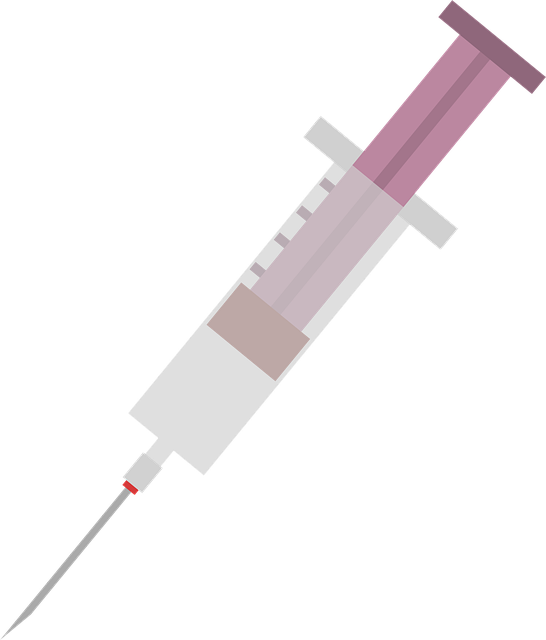PRP therapy for joint pain has emerged as a revolutionary, natural solution, minimizing surgery risks. Clinical studies prove its effectiveness in treating osteoarthritis and rheumatoid arthritis, offering significant pain relief, improved mobility, and reduced inflammation. Continuous research optimizes PRP preparation and delivery, promising enhanced treatment outcomes, including potential synergy with stem cell therapy for cartilage repair. Personalized PRP treatments offer hope for improved quality of life for individuals dealing with joint pain.
“Discover how PRP therapy is revolutionizing joint pain treatment. This cutting-edge approach, utilizing a patient’s own platelet-rich plasma, holds immense potential in alleviating discomfort and restoring mobility.
In this comprehensive guide, we explore ‘Understanding PRP Therapy’ to uncover its mechanism for targeted relief. We delve into ‘Clinical Studies’ reviewing the scientific evidence of its efficacy. ‘Real-Life Success Stories’ will inspire as it shares transformative journeys. Furthermore, we peek into the ‘Future Prospects’ of this game-changing treatment for optimal joint health.”
Understanding PRP Therapy: Unlocking Joint Pain Relief
PRP therapy for joint pain has emerged as a game-changer in orthopaedic care, offering a natural and effective solution for managing chronic conditions. This innovative treatment leverages the body’s own healing mechanism by utilizing platelet-rich plasma (PRP), which is derived from a patient’s blood. Containing a high concentration of growth factors, PRP accelerates tissue repair and regeneration, making it particularly effective for alleviating joint pain associated with arthritis, tendonitis, ligament sprains, and other musculoskeletal disorders.
The success stories of PRP therapy for joint pain are numerous and compelling. Many patients have reported significant improvements in mobility, reduced inflammation, and a decreased need for pain medication after undergoing this treatment. By stimulating the body’s inherent healing process, PRP provides a safe and minimally invasive alternative to surgical interventions, making it an attractive option for those seeking long-term relief from joint pain without the risks associated with more aggressive procedures.
Clinical Studies: Evaluating PRP's Efficacy for Joints
Clinical studies have played a pivotal role in evaluating the efficacy and safety of Platelet-Rich Plasma (PRP) therapy for managing joint pain. These research endeavors have shed light on PRP’s potential as a game-changer in orthopedics. Numerous studies have been conducted to assess its effectiveness, particularly in treating osteoarthritis, rheumatoid arthritis, and other joint conditions.
Researchers often employ rigorous methodologies, including randomized controlled trials, to compare the outcomes of PRP therapy against traditional treatments or placebo groups. These studies measure various parameters such as pain reduction, improved function, and overall quality of life. The results have been promising, demonstrating significant relief in joint pain and enhanced mobility for patients undergoing PRP therapy. Such clinical successes contribute to the growing body of evidence supporting PRP’s role in revolutionizing joint pain management.
Real-Life Success Stories: Transforming Lives with PRP
In the realm of clinical research, numerous success stories highlight the transformative power of Platelet-Rich Plasma (PRP) therapy for joint pain. Real-life patients have shared remarkable journeys of recovery and improved quality of life after undergoing this innovative treatment. One such patient, suffering from chronic knee pain due to arthritis, experienced significant relief and reduced inflammation following PRP therapy. This non-invasive procedure involves extracting the individual’s own blood and concentrating platelets, which are known for their healing properties, offering a natural and effective solution for joint pain management.
Another inspiring story involves an athlete who had been grappling with persistent shoulder injuries, jeopardizing his career. After incorporating PRP therapy into his treatment plan, he witnessed a remarkable turnaround. The enhanced blood flow and accelerated tissue repair facilitated by PRP led to faster recovery times and improved performance, allowing him to return to his sport at the top of his game. These success stories underscore the potential of PRP therapy for joint pain, providing hope and a promising avenue for individuals seeking effective relief without relying on invasive surgical interventions.
Future Prospects: Advancing PRP Treatments for Joint Health
The future of PRP therapy for joint pain looks promising, with ongoing research and advancements pushing the boundaries of what’s possible. Scientists are continuously exploring new methods to enhance the effectiveness of PRP treatments, focusing on tailoring these therapies to specific joint conditions. This involves optimizing the preparation of PRP, studying its interaction with different types of joint tissue, and investigating novel delivery techniques.
One area of interest is the potential combination of PRP with other regenerative medicine approaches, such as stem cell therapy, to create synergistic effects for repairing damaged cartilage and improving overall joint function. As our understanding of PRP’s mechanisms deepens, we can expect more precise and personalized treatments, offering hope for improved mobility and quality of life for individuals suffering from joint pain.
PRP therapy for joint pain has emerged as a promising and effective treatment option, backed by both clinical research and compelling success stories. Studies have consistently shown its efficacy in alleviating pain and improving joint function, making it a valuable addition to the arsenal of joint health treatments. As ongoing research continues to unveil the full potential of PRP, its future prospects look bright, offering hope for advanced and personalized therapies that could transform the lives of those suffering from chronic joint pain.
